Authors & editors
ANU Press has collaborated with a diverse range of authors and editors across a wide variety of academic disciplines. Browse the ANU Press collection by author or editor.

The Compleat Busoni, Volume 3 »
Ending to Dr. Faust and the definitive realisations of the Fantasia Contrappuntistica
Authored by: Larry Sitsky
Publication date: November 2023
VOLUME 3: I. Ending to Dr. Faust II. Definitive version of the Fantasia Contrappuntistica for two pianos III. Concerto for Orchestra: Completion and orchestration of the Fantasia Contrappuntistica.
Larry Sitsky, professor emeritus at The Australian National University, is an internationally known composer, pianist, scholar, and teacher. His books are fundamental reference works on subjects such as Australian piano music, the 20th-century avant-garde, the piano music of Anton Rubinstein, the early 20th-century Russian avant-garde, and the classical reproducing piano roll.
The Compleat Busoni is the result of Sitsky’s lifelong focus on the composer Ferruccio Busoni. Over three volumes, Sitsky surveys Busoni’s vast output, provides an ending to the unfinished opera Dr. Faust, and presents definitive realisations of the Fantasia Contrappuntistica in two-piano and orchestral versions. New insights into Busoni’s style and aesthetics are an integral aspect of this work.
Format: Hardback

The Compleat Busoni, Volume 2 »
Busoni’s other music: A complete survey
Authored by: Larry Sitsky
Publication date: November 2023
VOLUME 2: Busoni’s other music: A complete survey.
Larry Sitsky, professor emeritus at The Australian National University, is an internationally known composer, pianist, scholar, and teacher. His books are fundamental reference works on subjects such as Australian piano music, the 20th-century avant-garde, the piano music of Anton Rubinstein, the early 20th-century Russian avant-garde, and the classical reproducing piano roll.
The Compleat Busoni is the result of Sitsky’s lifelong focus on the composer Ferruccio Busoni. Over three volumes, Sitsky surveys Busoni’s vast output, provides an ending to the unfinished opera Dr. Faust, and presents definitive realisations of the Fantasia Contrappuntistica in two-piano and orchestral versions. New insights into Busoni’s style and aesthetics are an integral aspect of this work.
Format: Hardback

Sisters in Peace »
The Women’s International League for Peace and Freedom in Australia, 1915–2015
Authored by: Kate Laing
Publication date: November 2023
Is preparing for war the best means of preserving peace? In Sisters in Peace, Kate Laing contends that this question has never been solely the concern of politicians and strategists. She maps successive generations of twentieth-century women who were eager to engage in political debate even though legislative and cultural barriers worked to exclude their voices.
In 1915, during the First World War, the Women’s International Congress at The Hague was convened after alarmed and bereaved women from both sides of the conflict insisted that their opinions on war and the pathway to peace be heard. From this gathering emerged the Women’s International League for Peace and Freedom (WILPF), which to this day campaigns against militarism and nuclear weapons. In Australia, the formation of a section of WILPF connected political women to a worldwide network that sustained their anti-war activism throughout the last century.
In examining the rise of WILPF in Australia, Sisters in Peace provides a gendered history of this country’s engagement with the politics of internationalism. This is a history of WILPF women who committed to peace activism even as Australia’s national identity and military allegiances shifted over time—a history that has until now been an overlooked part of the Australian peace movement.

Adapting for Inertia »
Delivering Large Government ICT Projects in Australia and New Zealand
Authored by: Grant Douglas
Publication date: October 2023
Despite much learning and research over many decades, large ICT software projects have continued to experience poor outcomes or fallen short of original expectations—some spectacularly so. This is the case in the Australian and New Zealand public sectors, even though these projects operate within historically developed institutional frameworks that provide the rules, guidelines and controls, and aim to consistently improve outcomes.
Something is amiss. In Adapting for Inertia, Grant Douglas questions the effectiveness of these institutional frameworks in governing large ICT software projects in the Australian and New Zealand public sectors. He also gauges the perspectives of a large number of actors in projects in both sectors and examines two case studies in detail.
The main narrative to emerge is that the institutional frameworks are in a state of inertia: they are failing to adapt, owing to various institutional factors—all of which have public policy implications. Sadly, Douglas finds, this inertia is likely to continue. If there is difficulty in changing the capacity to govern, he proposes, policymakers should look to change the nature of what is to be governed.
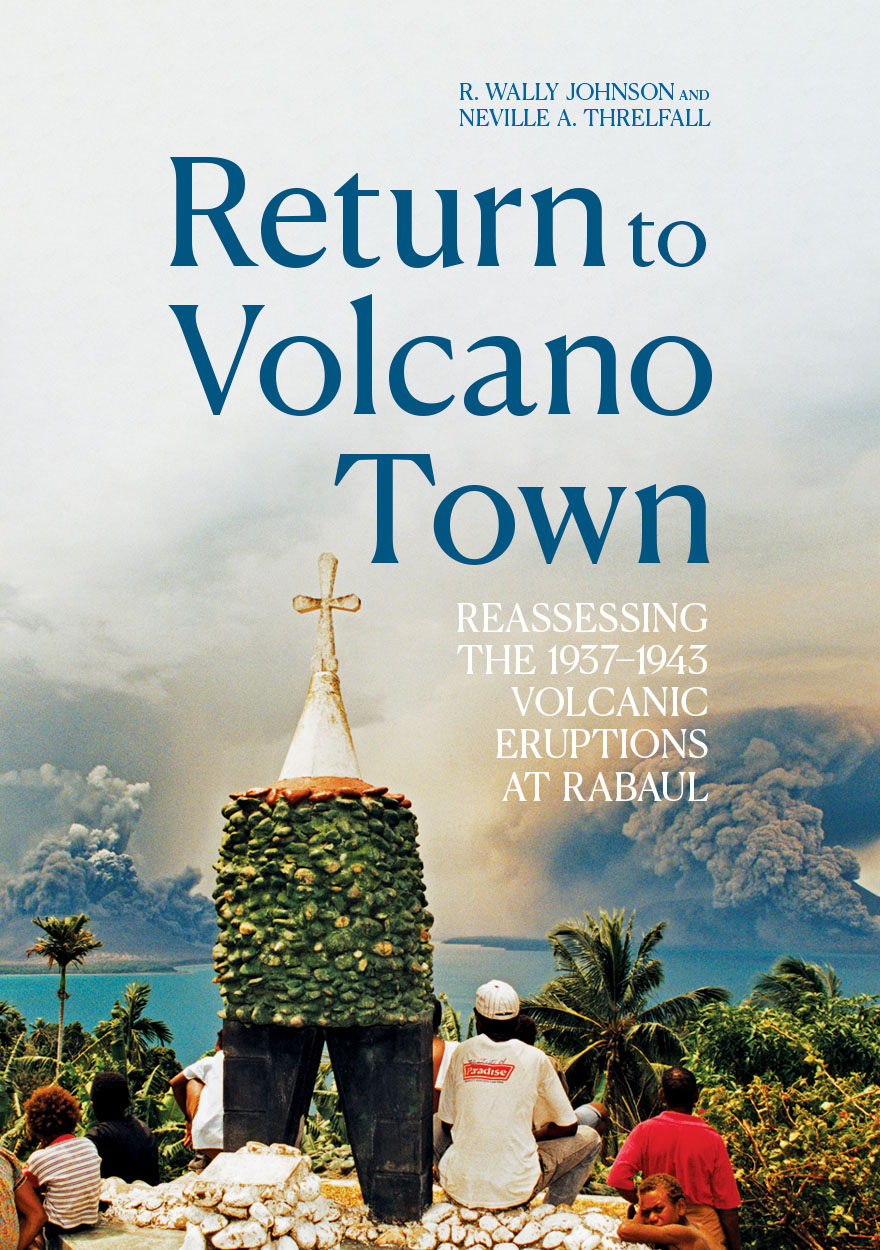
Return to Volcano Town »
Reassessing the 1937–1943 Volcanic Eruptions at Rabaul
Authored by: R. Wally Johnson, Neville A. Threlfall
Publication date: October 2023
Wally Johnson and Neville Threlfall re-examine the explosive volcanic eruptions that in 1937–43 killed more than 500 people in the Rabaul area of East New Britain, Papua New Guinea. They reassess this disaster in light of the prodigious amount of new scientific and disaster-management work that has been undertaken there since about 1971, when strong tectonic earthquakes shook the area. Comparisons are made in particular with volcanic eruptions in 1994–2014, when half of Rabaul town was destroyed and then abandoned.
A striking feature of historical eruptive periods at Rabaul is the near‑simultaneous activity at Vulcan and Tavurvur volcanoes, on either side of Rabaul Harbour. Such rare ‘twin’ eruptions are interpreted to be the result of a common magma reservoir beneath the harbour. This interpretation has implications for ongoing hazard and risk assessments and for volcano monitoring in the area.

A Young Englishman in Victorian Hong Kong »
The Diaries of Chaloner Alabaster, 1855–1856
Authored by: Benjamin Penny
Publication date: October 2023
In August 1855, 16-year-old Chaloner Alabaster left England for Hong Kong, to take up a position as a student interpreter in the China Consular Service. He would stay for almost 40 years, climbing the rungs of the service and eventually becoming consul-general of Canton. When he retired he returned to England and received a knighthood. He died in 1898. Throughout his adult life, Alabaster kept diaries.
In the first four volumes of these diaries, collected here by Benjamin Penny, the teenage Alabaster recorded his thoughts and observations, told himself anecdotes, and exploded in outbursts of anger and frustration. He was young and enthusiastic, and the everyday sights, sounds and smells of Hong Kong were novel to him. He describes how the Chinese people around him ironed clothes, dried flour and threshed rice; how they gambled, prepared their food and made bean curd; and what opera, new year festivities and the birthday of the Heavenly Empress were like. Like many a young Victorian, he was also a keen observer of natural history, fascinated by fireflies and ants, corals and sea slugs, and the volcanic origins of the landscape.
Alabaster’s diaries are a unique, vibrant and riveting record of life in the young British colony on the cusp of the Second Opium War. With A Young Englishman in Victorian Hong Kong, Penny sheds new light on the history of the region.
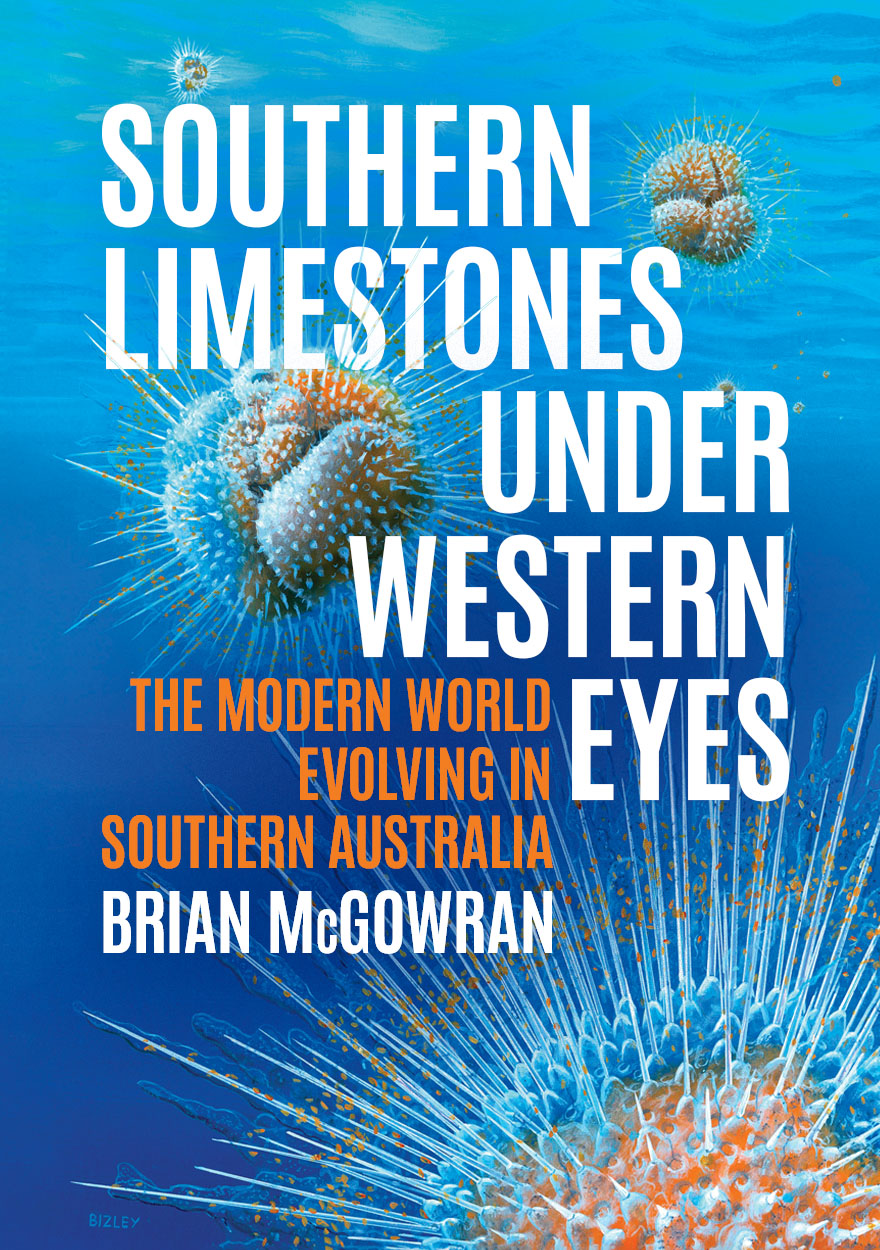
Southern Limestones under Western Eyes »
The Modern World Evolving in Southern Australia
Authored by: Brian McGowran
Publication date: September 2023
Science, the growth of reliable knowledge, became a major triumph of the European Enlightenment in the seventeenth century, under the guise of ‘natural philosophy’: investigating what the earth and universe are made of and how things work. It took another century for the parallel subject ‘natural history’ to glimpse how the earth, its geography and its richly diverse life came to be. Later, geology and biology became intertwined as biogeohistory—an ever-changing environmental theatre hosting an ever-changing evolutionary play.
This environmental theatre has shifted with the making and breaking of supercontinents, the birth and death of global oceans, and the rise and fall of global hothouses and ice ages. The evolutionary play begins with biostratigraphy, wherein fossils revealed deep time and ancient environments and built the first meaningful geological timescale, and ends with the still young science of palaeoceanography—central to which are microfossils, rich in information about the oceans and climates of the past.
In Southern Limestones under Western Eyes, Brian McGowran recounts the history of biogeohistory itself: the ever-changing perceptions of rocks, fossils and landscapes, from the late 1600s to the present. McGowran’s focus is southern Australia, the north shore of the dying Australo-Antarctic Gulf, in an era bracketed by two catastrophes: the extinction of dinosaurs and the emergence of humans.

East Asia Forum Quarterly: Volume 15, Number 3, 2023 »
Publication date: September 2023
As ASEAN and Japan celebrate the 50th anniversary of their official relationship, the challenge to redefine the goals and purpose of this relationship is now pressing. Great power rivalry, regional power relativities, and sweeping political and economic disruption have injected new dynamics and exposed serious vulnerabilities. With ASEAN member states and Japan each facing their own domestic challenges, the opportunity presents itself for a more 'equal' partnership that is able to 'co-create' a regional economy and society, from paternalistic origins. This issue of East Asia Forum Quarterly addresses these challenges for the ASEAN–Japan relationship and offers ideas, vision and initiatives that might guide its future: exploring the policy options for a relationship challenged by regional economic fragmentation; detailing the lessons available for policymakers beginning to act on sustainability and digital and green transformation; and examining the opportunities taken and thus far unrealised for the fashioning of new soft diplomacy and investment in intra-ASEAN infrastructure.
Download for free
Not available for purchase

Resisting Indonesia’s Culture of Impunity »
Aceh’s Truth and Reconciliation Commission
Publication date: August 2023
Resisting Indonesia’s Culture of Impunity examines the role of Indonesia’s first truth and reconciliation commission—the Aceh Truth and Reconciliation Commission, or KKR Aceh—in investigating and redressing the extensive human rights violations committed during three decades of brutal separatist conflict (1976–2005) in the province of Aceh.
The KKR Aceh was founded in late 2016, as a product of the 2005 peace deal between the Indonesian government and the Free Aceh Movement (GAM). It has since faced many challenges—not least from Indonesia’s security forces and former GAM leaders, who have joined together in their determination to maintain impunity for their respective roles in the conflict. Indeed, the commission would not have been established without the tireless work of civil society actors, including non-government organisations and other humanitarian groups.
In Resisting Indonesia’s Culture of Impunity, the editors set out to amplify the role of these civil society actors in the KKR Aceh and in transitional justice in Indonesia. Each chapter has been written by a team of authors, composed predominantly of commissioners and staff from the KKR Aceh itself, members of key civil society organisations, and academics. Further, the editors aim to scrutinise the KKR Aceh from the inside and analyse the establishment and operation of what is perhaps the only genuine state-sponsored attempt to implement transitional justice in Indonesia today.

Subjects and Aliens »
Histories of Nationality, Law and Belonging in Australia and New Zealand
Edited by: Kate Bagnall, Peter Prince
Publication date: August 2023
Subjects and Aliens confronts the problematic history of belonging in Australia and New Zealand. In both countries, race has often been more important than the law in determining who is considered ‘one of us’.
Each chapter in the collection highlights the lived experiences of people who negotiated laws and policies relating to nationality and citizenship rights in twentieth-century Australasia, including Chinese Australians enlisting during the First World War, Dalmatian gum-diggers turned farmers in New Zealand, Indians in 1920s Australia arguing for their citizenship rights, and Australian women who lost their nationality after marrying non-British subjects.
The book also considers how the legal belonging—and accompanying rights and protections—of First Nations people has been denied, despite the High Court of Australia’s recent assertion (in the landmark Love & Thoms case of 2020) that Aboriginal people have never been considered ‘aliens’ or ‘foreigners’ since 1788. The experiences of world-famous artist Albert Namatjira, and of those made to apply for ‘certificates of citizenship’ under Western Australian law, suggest otherwise.
Subjects and Aliens demonstrates how people who legally belonged were denied rights and protections as citizens through the actions of those who created, administered and interpreted the law across the twentieth century, and how the legal ramifications of those actions can still be felt today.

The Compleat Busoni, Volume 1 »
Busoni and the piano: The works, the writings, and the recordings
Authored by: Larry Sitsky
Publication date: August 2023
VOLUME 1: Busoni and the piano: The works, the writings, and the recordings.
Larry Sitsky, professor emeritus at The Australian National University, is an internationally known composer, pianist, scholar, and teacher. His books are fundamental reference works on subjects such as Australian piano music, the 20th-century avant-garde, the piano music of Anton Rubinstein, the early 20th-century Russian avant-garde, and the classical reproducing piano roll.
The Compleat Busoni is the result of Sitsky’s lifelong focus on the composer Ferruccio Busoni. Over three volumes, Sitsky surveys Busoni’s vast output, provides an ending to the unfinished opera Dr. Faust, and presents definitive realisations of the Fantasia Contrappuntistica in two-piano and orchestral versions. New insights into Busoni’s style and aesthetics are an integral aspect of this work.
Format: Hardback
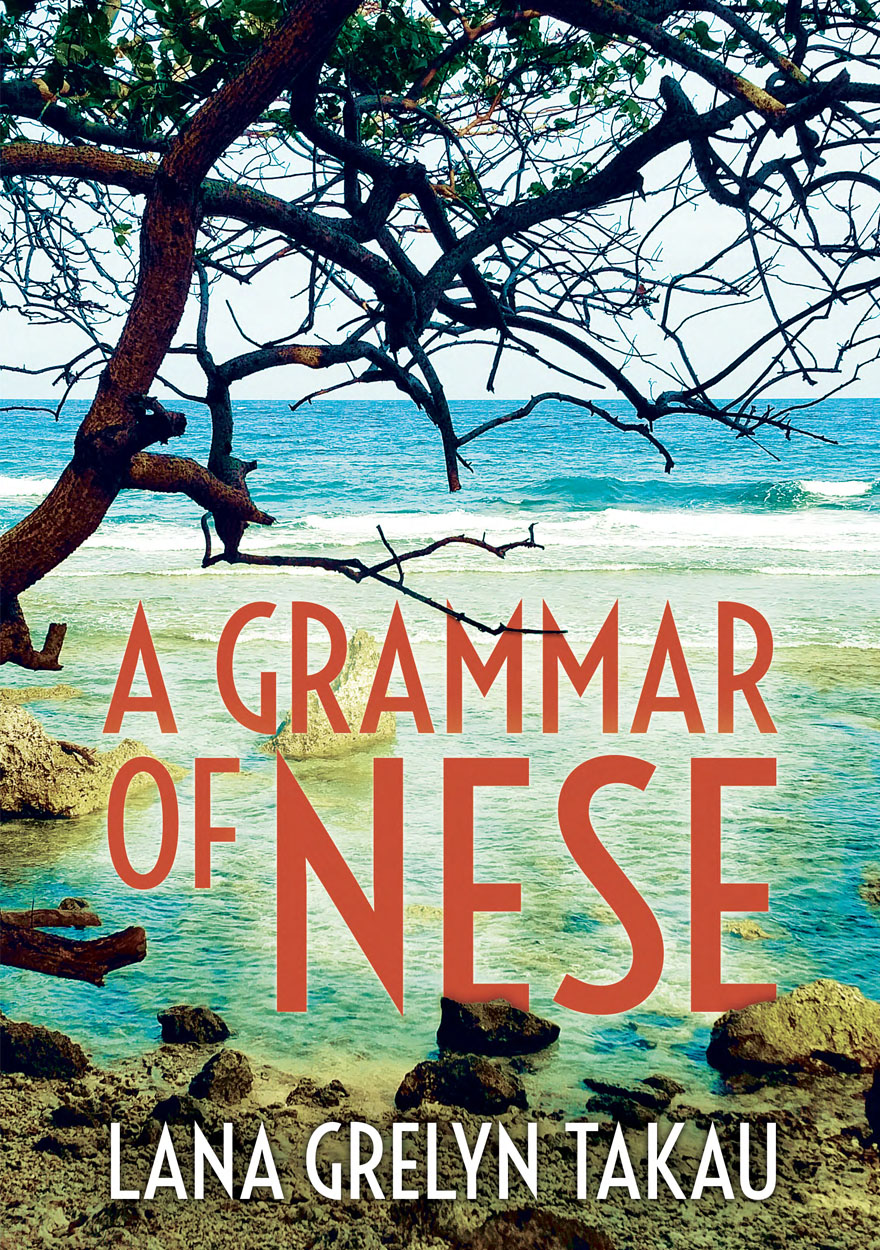
A Grammar of Nese »
Authored by: Lana Grelyn Takau
Publication date: August 2023
Nese is a dying Oceanic language spoken on the island of Malekula, in northern Vanuatu. This book, based on first-hand fieldwork data, and without adhering to any particular syntactic framework, presents a synchronic grammatical description of Nese’s phonology and syntax. Despite being on the verge of extinction, with fewer than 20 living speakers, the language displays intriguing properties—including but not exclusive to the cross-linguistically rare apicolabial phonemes, interesting vowel-raising patterns in some word classes, and a discontinuous negation relationship that is obligatorily expressed with the irrealis mood marker. This book will probably be the last work published on Nese.

Watershed »
The 2022 Australian Federal Election
Publication date: August 2023
Australia’s 2022 federal election played out in ways that few could have expected. Not only did it bring a change of government; it also saw the lowest number of primary votes for the major parties and the election of the greatest number of Independents to the lower house since the formation of the Australian party system. The success of the Teal Independents and the Greens, along with the appetite voters showed for ‘doing politics differently’, suggested that the dominant model of electoral competition might no longer be the two-party system of Labor versus Liberal. At the very least, the continued usefulness of the two-party-preferred vote as a way of conceptualising and predicting Australians’ voting behaviour has been cast into serious doubt.
In Watershed, leading scholars analyse the election from the ground up—focusing on the campaign issues, the actors involved, and the successes and failures of campaign strategy—and show how digital media, visual politics and fake news are changing the way politics is done. Other topics include the impact of COVID-19 and the salience of climate, gender and integrity issues, as well as voting patterns and polling accuracy. This authoritative book is indispensable for understanding the disenchantment with the major parties, the rise of Community Independents, and the role of the Australian Greens and third parties.
Watershed is the eighteenth in the ANU Press federal election series and the tenth sponsored by the Academy of the Social Sciences in Australia.
‘The Australian election books have been appearing after each election since the 1987 election, and with ANU Press as publisher since 2010. As chair of the Social Sciences Editorial Committee, I am proud of this connection: it is a prestige publication … The rise of fact-free partisanship makes the kind of considered discussion being carried on here more significant than ever.’
– Frank Bongiorno, Launch speech for Watershed: The 2022 Australian Federal Election, 18 October 2023.

International Review of Environmental History: Volume 9, Issue 1, 2023 »
Edited by: James Beattie
Publication date: July 2023
Inspired by recent scholarship on disaster history and situated within the broader field of environmental history, this special issue highlights structural factors that have exacerbated the effects of extreme weather and explores how states and societies have responded and adapted (or not) during and after disasters. The five case studies all focus on the Indian Ocean World (IOW), a macro-region stretching from eastern Africa to East Asia and Southeast Asia, and align chronologically with the so-called Anthropocene, the period during which the industrial Global North began to leave its indelible imprint on the world’s climatic systems. They build on a small but growing scholarship that looks at historical disasters and disaster responses within the IOW, arguing collectively for the application of historical methodologies in approaching the challenge of extreme weather now and in the future.
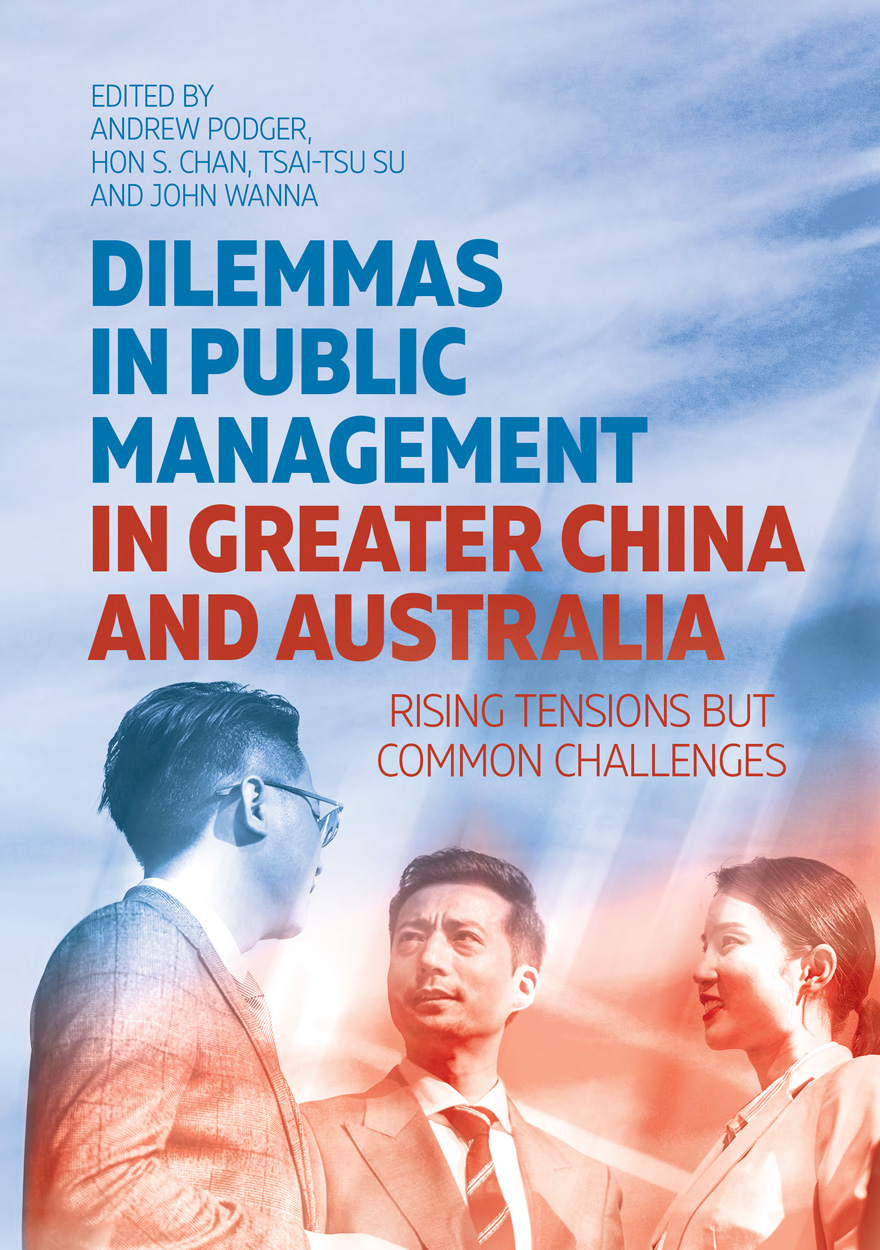
Dilemmas in Public Management in Greater China and Australia »
Rising Tensions but Common Challenges
Publication date: July 2023
This book draws on more than a decade of workshops organised by the Greater China Australia Dialogue on Public Administration, involving scholars and practitioners from Mainland China, Hong Kong, Taiwan and Australia. Although these workshops recognised the major differences in the institutional frameworks of these jurisdictions, until recently they focused largely on the shared challenges and the diffusion of ideas and approaches.
As rising international tensions inevitably draw attention to areas where interests and philosophies diverge, it is the differences that must now be highlighted. Yet, despite the tensions, this book reveals that these jurisdictions continue to address shared challenges in public administration.
The book’s contributors focus in detail on these four areas:
intergovernmental relations, including the shifting balance between centralisation and decentralisation
budgeting and financial management, including during and after the COVID-19 pandemic
the civil service, its capability, and its relationship with government and the public
service delivery, particularly in health and aged care.
This book is aimed at a wide readership, not only at those within the jurisdictions it explores. It emphasises the importance of continued engagement in understanding different approaches to public administration—confirming fundamental philosophical differences where necessary but also looking for common ground and opportunities for shared learning.
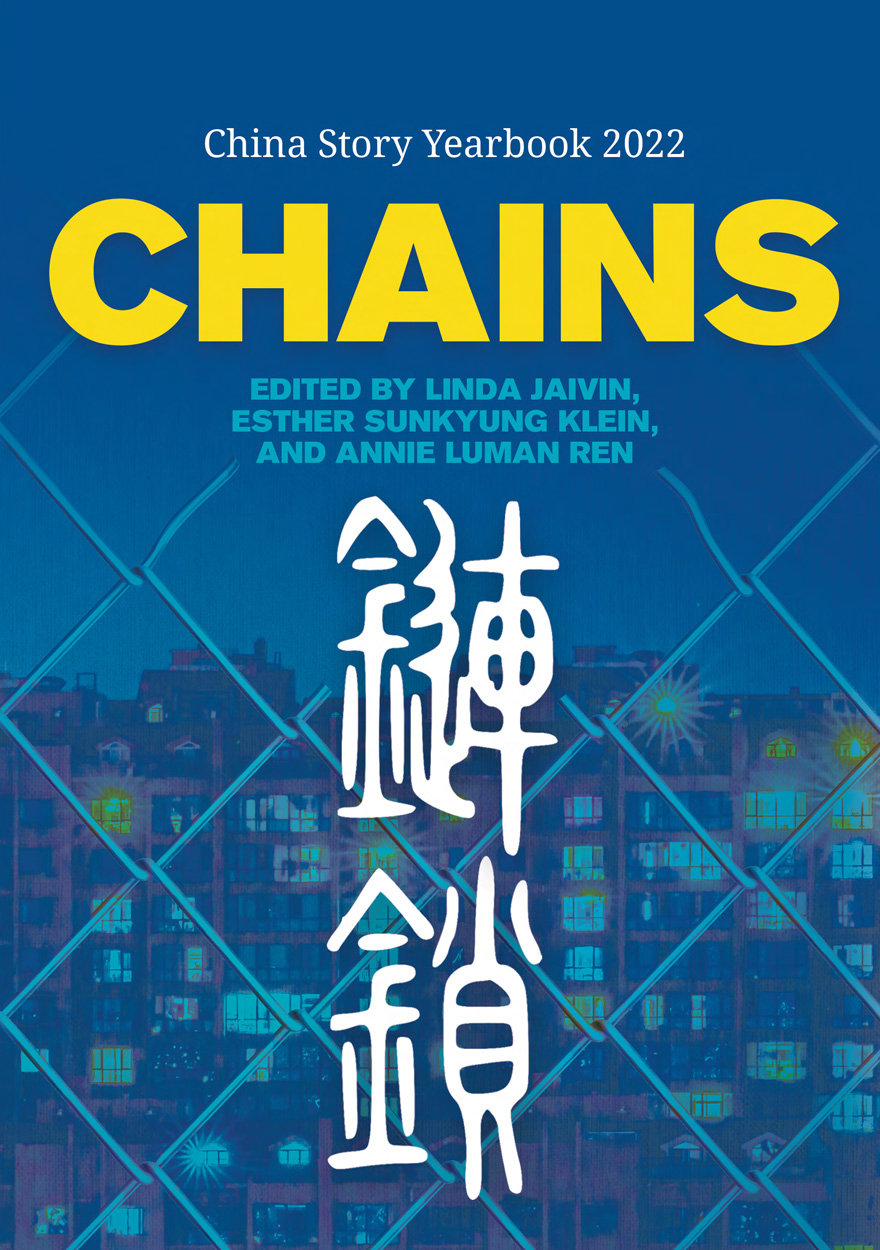
Chains »
Edited by: Linda Jaivin, Esther Sunkyung Klein, Annie Luman Ren
Publication date: July 2023
Speaking to the Twentieth National Congress of the Communist Party of China, in October 2022, President Xi Jinping reiterated his commitment to the ‘opening up’ policy of his predecessors — a policy that has burnished the party’s political legitimacy among its citizens by enabling four decades of economic development. Yet, for all the talk of openness, 2022 was a year of both literal and symbolic locks and chains — including, of course, the long, coercive, and often brutally enforced lockdowns of neighbourhoods and cities across China, most prominently Shanghai. Then there was a vlogger’s accidental discovery of the ‘woman in chains’, sparking an anguished, nationwide conversation about human trafficking. That was part of a broader (if frequently censored) conversation about gendered violence and women’s rights, in a year when women’s representation at the highest levels of power, which was already minimal, decreased even further. There was trouble with supply chains and, with the Fourth Taiwan Strait Crisis, in August, island chains as well. Despite the tensions in the Asia-Pacific, the People’s Republic of China expanded its diplomatic initiatives among Pacific island nations and celebrated fifty years of diplomatic links with both Japan and Australia. As the year drew to a close, a tragic fire in a locked-down apartment building in Ürümqi triggered a series of popular protests that brought an end to three years of ‘zero COVID’. The China Story Yearbook: Chains provides informed perspectives on these and other important stories from 2022.
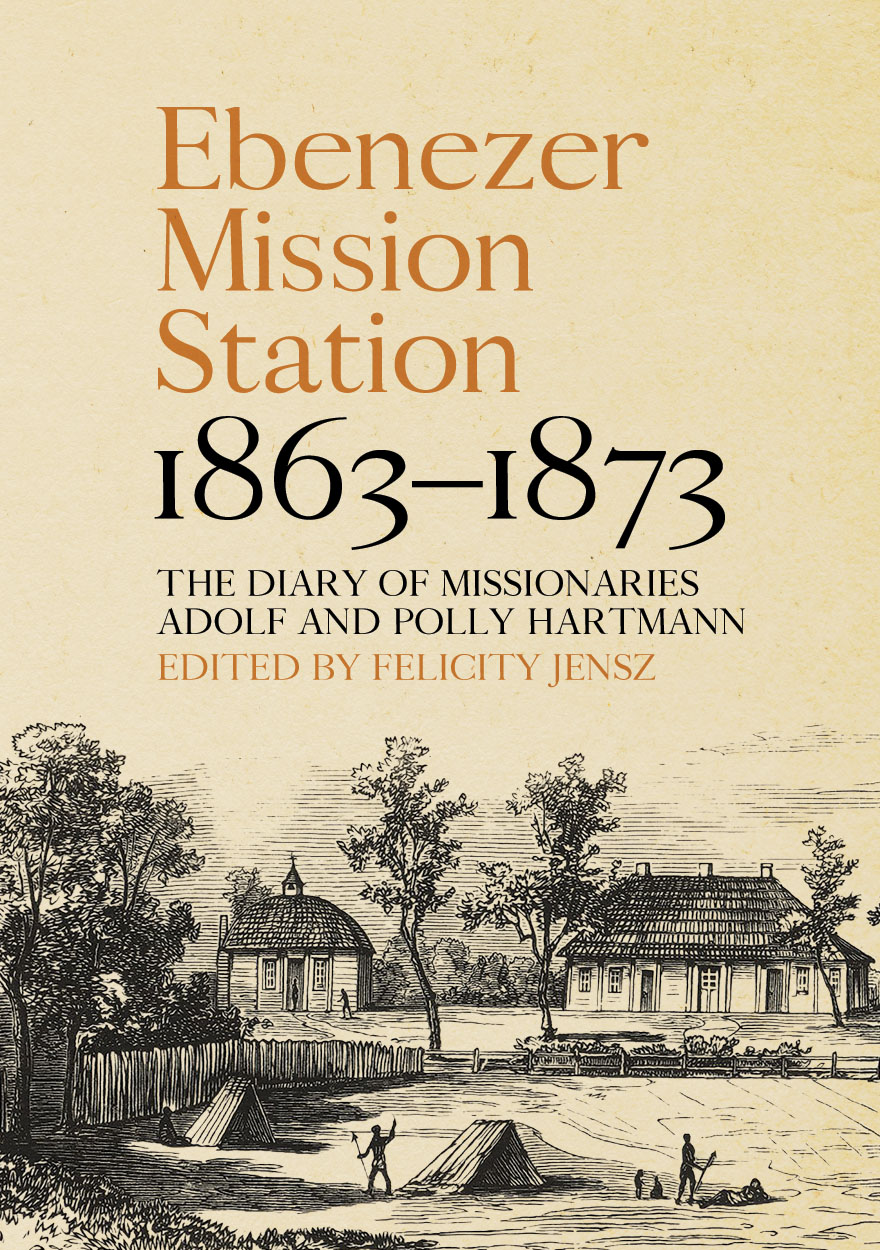
Ebenezer Mission Station, 1863–1873 »
The Diary of Missionaries Adolf and Polly Hartmann
Edited by: Felicity Jensz
Publication date: July 2023
This book contains the annotated diary of Adolf and Mary (Polly) Hartmann, missionaries of the Moravian Church who worked at the Ebenezer mission station on Wotjobaluk country, in the north-west of the Colony of Victoria, Australia. The diary begins in 1863, as the Hartmanns are preparing to travel from Europe to take up their post, and ends in 1873, by which time they are working in Canada as missionaries to the Lenni Lenape people.
Recording the Hartmann’s eight years at the Ebenezer mission, the diary presents richly detailed insights into the daily interactions between Aboriginal people and their colonisers. The inhabitants of the mission are overwhelmingly described in the diary as agents in their lives, moving in and out of the missionaries’ sphere of influence, yet restricted at times by the boundaries of the mission. The diary reveals moments of laughter, shared grief, community, advocacy and reciprocal learning, alongside the mundane everyday chores of mission life.
Through the personal writings of a missionary couple, this diary brings to light the regular, routine and extraordinary events on a mission station in Australia in the third quarter of the nineteenth century—a period just prior to British high imperialism, and a period before increasingly restrictive legislation was enforced on Indigenous people in the Colony of Victoria.
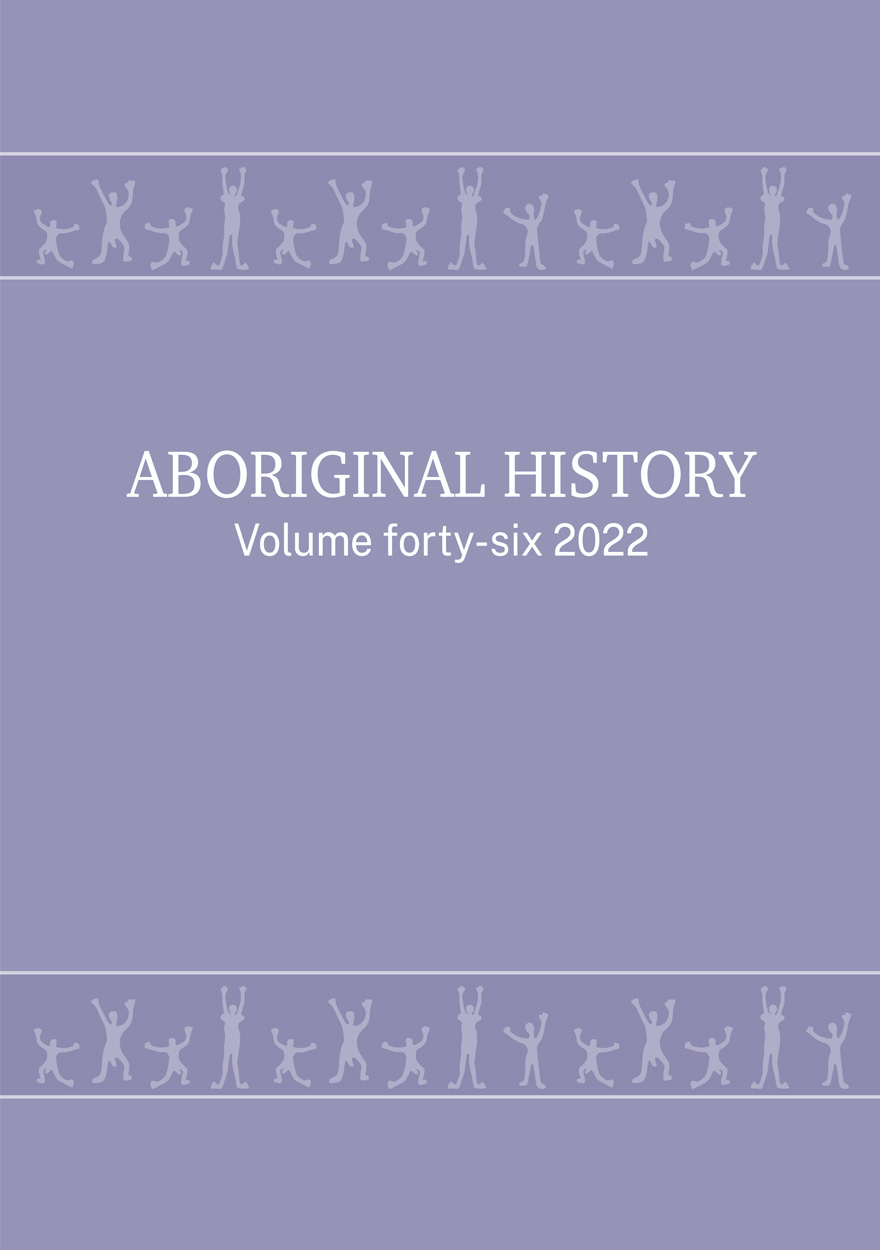
Aboriginal History Journal: Volume 46 »
Edited by: Crystal McKinnon, Ben Silverstein
Publication date: July 2023
The articles in Volume 46 each take provocative and generative approaches to the challenge of historical truth-telling. Examining the public memory of massacres in Gippsland, Victoria, Aunty Doris Paton, Beth Marsden and Jessica Horton trace a history of contestation between, on the one hand, forms of frontier memorialisation articulated to secure colonial possession and, on the other, the sovereign counter-narratives of Gunai Kurnai communities. Heidi Norman and Anne Maree Payne describe Aboriginal campaigns to repatriate Ancestors’ stolen remains over the past fifty years, showing how these campaigns have proceeded along with and as part of nation-building movements towards land rights and self-determination. Their call for Aboriginal relationships with Ancestors to be represented in a National Resting Place aligns their research with these movements. We return to Gunai Kurnai Country in a piece authored by Rob Hudson and Shannon Woodcock, who show how the Krowathunkooloong Keeping Place has formed an important site and tool of community work towards cultural resurgence; the article itself demonstrates the value and importance of collaborative and co-designed research methods. The volume then includes a conversation between Laura McBride and Mariko Smith about their curation of the Australian Museum’s Unsettled exhibition, through which they responded to the 250th anniversary of Cook’s Endeavour voyage along Australia’s east coast by telling true stories that put Cook in his place.

Australian Journal of Biography and History: No. 7, 2023 »
Special Issue: Convict Lives
Publication date: June 2023
This special issue of the Australian Journal of Biography and History explores the lives of convicts transported to Australia and asks how they can be investigated through various forms of biography. Given the ever-increasing range of methodologies for researching convict lives, this issue offers a timely reflection on their varying strengths, limitations and functions as well as on the future of convict history research. Nine refereed articles and two research notes provide new insights into various aspects of convict lives and experiences, combined with broad discussions on methodology.
In their introductory article, Matthew Cunneen and Malcolm Allbrook delve into the history of convict biography and the ways previous historians have attempted to explore and understand such lives. To overcome the gaps and silences in the archives, they argue, historians of convict Australia should employ a range of methodologies that each have their own particular domains of enquiry. In her research note, Janet McCalman reflects on the historiographical discoveries that have been made possible by the digitising, indexing and linking of convict records. She calls for future researchers to continue the work behind large datasets so that one day a fully comprehensive database of convicts can be created. Adopting a more fine-grained approach, Jennifer Bird reconstructs in detail from the archives the penal life of the convict Robert Edward Knox. Her analysis of Knox demonstrates an alternative to big-data approaches for understanding convict agency.
With a similarly refined scope—though one that looks at the convict system from the outside in—Jennifer Brookes examines the struggles of Lydia Anne to join her transported husband, Laurence Hynes Halloran, in Australia. Brookes’s article suggests that historians might consider how contemporary understandings of convicts can be enhanced by studying the lives of non-convicts associated with transportation. Matthew Cunneen reconstructs the lives of three convicts to further inform the experiences of people of colour under transportation. He argues for collective biography as a way of bridging the methodological shortcomings of purely biographical and prosopographical approaches. In the first large-scale study of the subject, Patricia Downes examines the social and legal conditions that saw freely arrived British soldiers sentenced to transportation within the Australian colonies. Complicating old narratives of the soldiers as contaminated by the convicts around them, she explores how military crimes resulting in transportation were sometimes driven by desires for freedom from military life and to protest service conditions.
Christine Fernon reports in her research note on the progress made in the National Centre of Biography’s First Three Fleets and Their Families project, an ambitious intergenerational study of Australia’s early colonial history. The preliminary findings give a sense of the insights that the project will provide into how convict lives formed the fabric of Australian colonial history. Kristyn Harman and Anthony Ray explore the intergenerational effects of the convict system through the experiences of three convicts of colour. In analysing these lives, they contribute to our understanding of interracial marriage, family formation and recidivism in Van Diemen’s Land. Hamish Maxwell-Stewart, David Andrew Roberts and Mark McLean draw on a wealth of convict records to show the potential of using big data to analyse thousands of convict lives in parallel. Doing so would allow the individual to be contextualised within the greater population and would present opportunities for temporal and spatial analysis, thereby deepening understandings of British criminal management.
Visually illustrating the potential of big data in studies of convict protest and collective biography, Monika Schwarz examines collective resistance networks in female factories in Van Diemen’s Land. She draws together the stories of previously unconnected women and uncovers episodes of resistance. Returning convict history to its material origins, Richard Tuffin, Martin Gibbs, David Roe and Sylvana Szydzik draw on archaeological methods of digital technology to recontextualise convict lives. By mapping sites of convict labour and quantifying the outputs from them, the authors collectively argue that adopting multi-scalar and multidisciplinary approaches to studying convict environments can deeply enhance the histories of those who were involved with them. This issue deepens understandings of Australia’s convicts, the lives they led and the ways historians can best study them.

East Asia Forum Quarterly: Volume 15, Number 2, 2023 »
Publication date: June 2023
Global trade stands at a crucial crossroads. The multilateral trading system that underpinned globalisation for three-quarters of a century is being pulled apart by big power politics and the way forward is fogged in mistrust. Global growth is projected to decline this year and remain anaemic. Inflation, the rising rivalry between the world’s two largest economies, and Russia’s invasion of Ukraine weigh heavily on the global outlook. The European war underscores how quickly the trading ties between nations might be undone and weaponised. This issue of East Asia Forum Quarterly examines the impact of trade sanctions as they rip into the trading system well beyond the battlefield. It interrogates how far sanctions have succeeded in hobbling Russia’s war machine and questions their deterrent value outside of conflict or their universal application, explores how supply chains have reshuffled around the reach of regulators, and asks how nations are probing opportunities created by the conflict.
Download for free
Not available for purchase
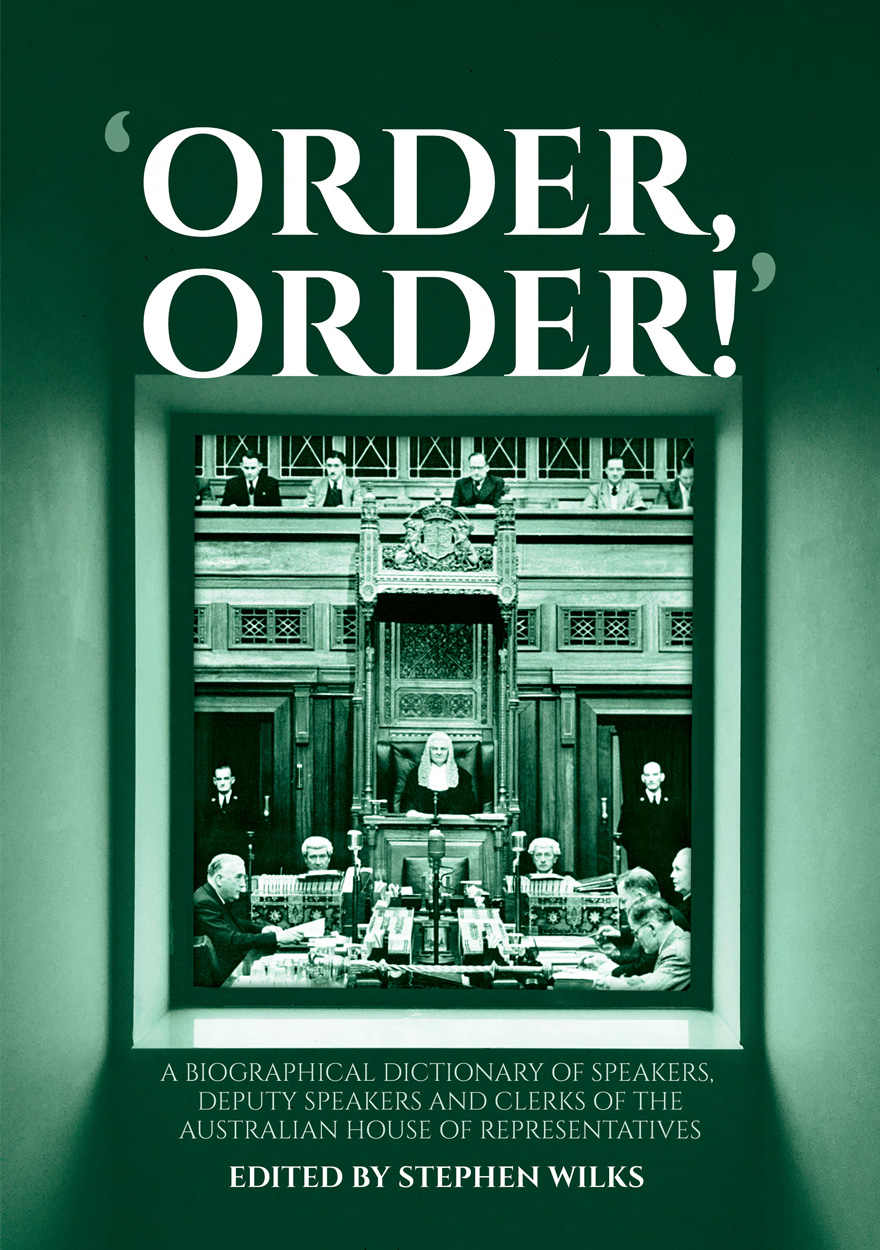
‘Order, Order!’ »
A Biographical Dictionary of Speakers, Deputy Speakers and Clerks of the Australian House of Representatives
Edited by: Stephen Wilks
Publication date: May 2023
‘Order, Order!’: A Biographical Dictionary of Speakers, Deputy Speakers and Clerks of the Australian House of Representatives shines a first-ever historical light on the remarkable men and women who have served in these national offices since Federation.
The Speakers include Frederick Holder, whose campaign to embed a Westminster-style Speakership died with him when he collapsed dramatically in the parliament; the much-loved Joan Child, Australia’s first female Speaker, whose struggles as a widow with five children fostered her commitment to social justice and made her, in the words of another Speaker, Anna Burke, ‘pretty fierce’; and Ian Sinclair, a warhorse of a parliamentarian who seemed to prove the poacher-turned-gamekeeper principle. The Deputy Speakers, a particularly eclectic assortment, include the strange and bleakly serious James Fowler, who once hopefully mailed a film synopsis to the American director Cecil B. DeMille and who ended his days warning of the perils of democracy. Amongst the Clerks are Frank Green, who, at the height of the Cold War, indiscreetly befriended members of the Communist Party, and the popular Jack Pettifer—a true child of parliament—who grew up in an apartment in the building.
This book includes analysis of what sorts of individuals typically filled these vital parliamentary positions, and the appearance of an Australian model of the Speakership based on pragmatic compromise. All three offices are typically more than just creatures of political parties—something that Australians should be prepared to defend against the remorseless encroachment of political partisanship.
Format: Hardback
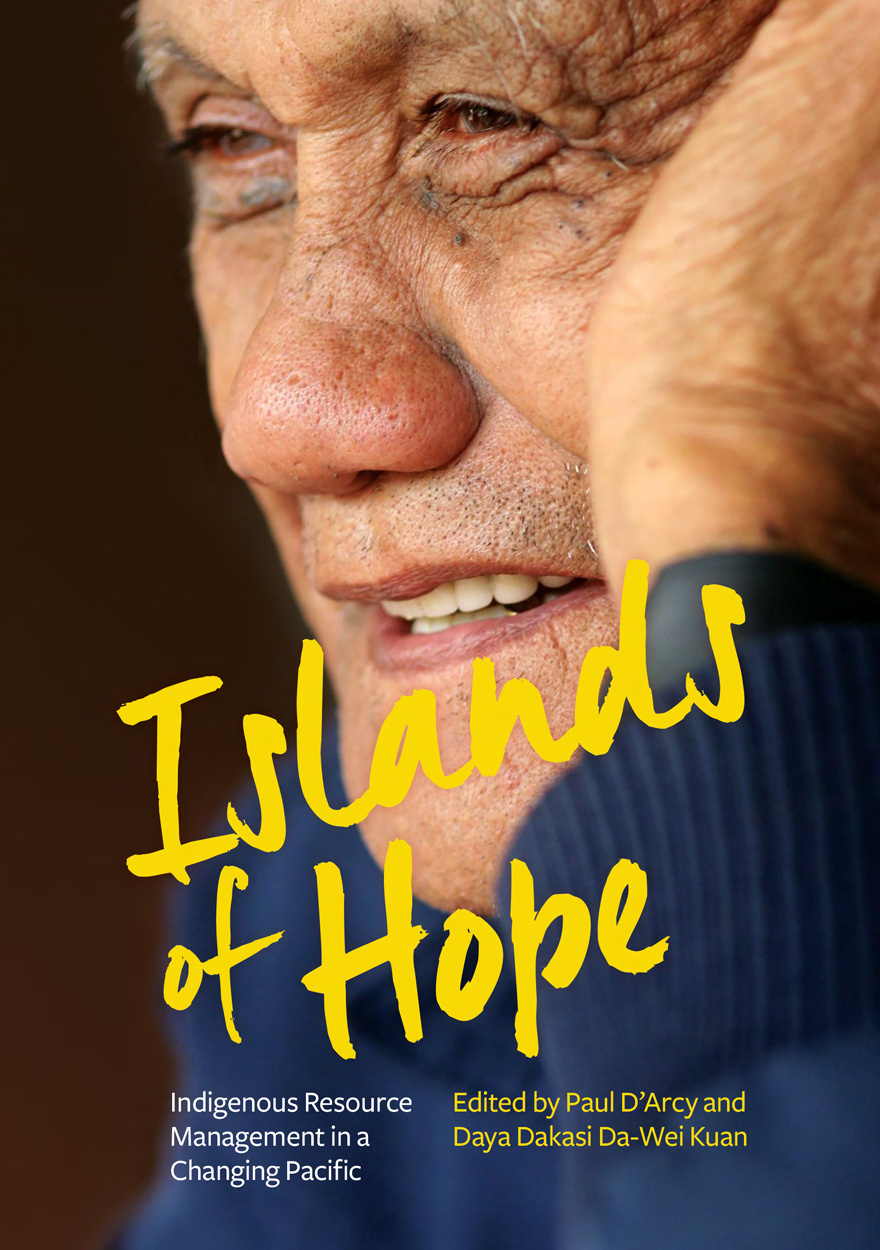
Islands of Hope »
Indigenous Resource Management in a Changing Pacific
Edited by: Paul D’Arcy, Daya Dakasi Da-Wei Kuan
Publication date: May 2023
In the Pacific, as elsewhere, indigenous communities live with the consequences of environmental mismanagement and over-exploitation but rarely benefit from the short-term economic profits such actions may generate within the global system.
National and international policy frameworks ultimately rely on local community assent. Without effective local participation and partnership, these extremely imposed frameworks miss out on millennia of local observation and understanding and seldom deliver viable and sustained environmental, cultural and economic benefits at the local level.
This collection argues that environmental sustainability, indigenous political empowerment and economic viability will succeed only by taking account of distinct local contexts and cultures. In this regard, these Pacific indigenous case studies offer ‘islands of hope’ for all communities marginalised by increasingly intrusive—and increasingly rapid—technological changes and by global dietary, economic, political and military forces with whom they have no direct contact or influence.
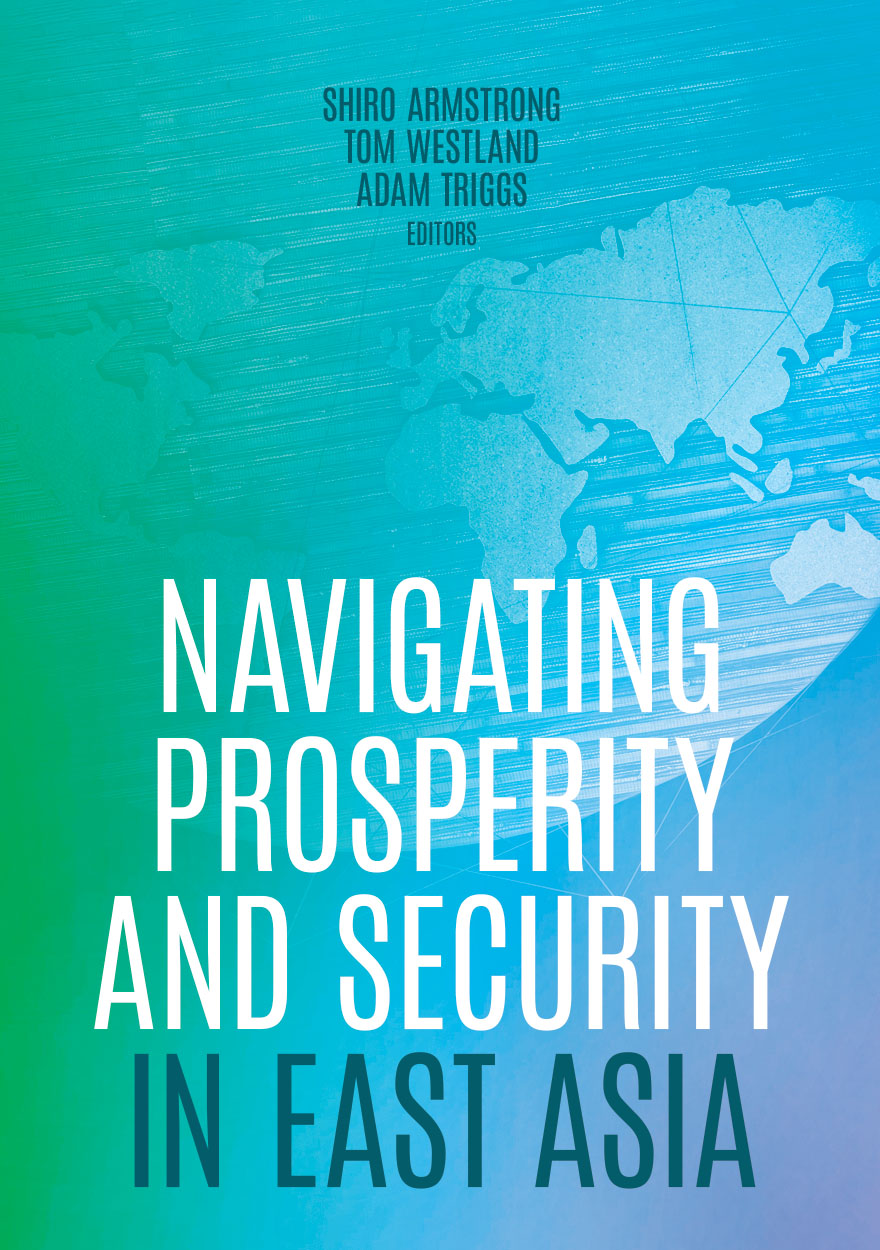
Navigating Prosperity and Security in East Asia »
Publication date: May 2023
The world’s two largest economies, the United States and China, are locked in a trade war, complicating policy choices internationally. These choices are sharper for the countries of East and Southeast Asia than they are elsewhere, because the multilateral rules-based economic order on which East Asian economic integration and cooperation is built is under threat.
Economic policy has never been separate from security considerations. For decades, the national security risks inherent in economic exchange have been mitigated under a US-led system that allowed the strengthening of economic ties, including between China and the rest of the world. But economics and security are increasingly entangled in a way that is damaging to both, creating a dangerous trade-off. Now, as global uncertainties grow, the risks of international exchange—rather than its benefits—are beginning to dominate the calculus for some policymakers.
Against this backdrop, how can Southeast Asian countries and US allies in Asia balance their security interests and their economic interests? And how can these countries, individually and collectively, broaden their policy options and deepen economic integration? This volume investigates the domestic and international dimensions of these questions.
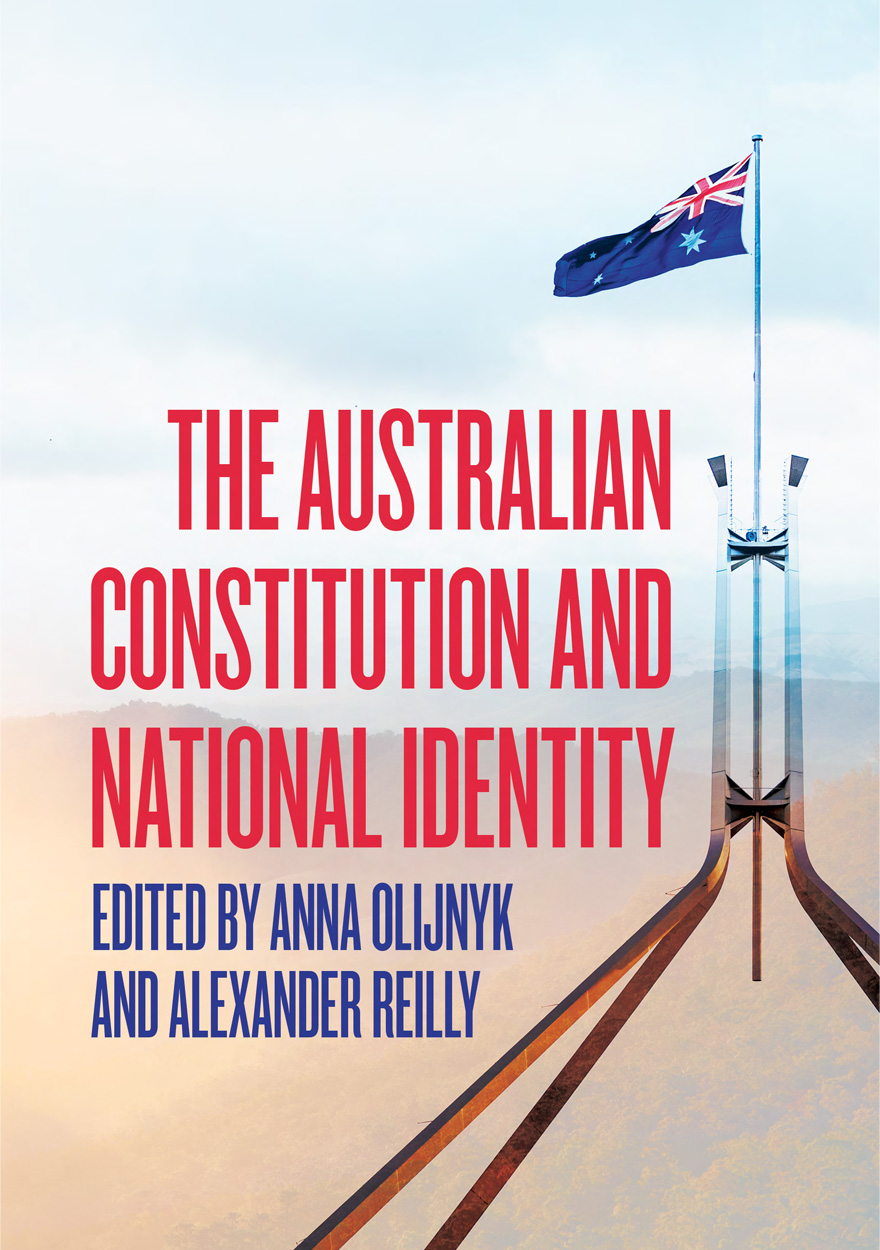
The Australian Constitution and National Identity »
Edited by: Anna Olijnyk, Alexander Reilly
Publication date: May 2023
What does Australia’s Constitution say about national identity? A conventional answer might be ‘not much’. Yet recent constitutional controversies raise issues about the recognition of First Peoples, the place of migrants and dual citizens, the right to free speech, the nature of our democracy, and our continuing connection to the British monarchy. These are constitutional questions, but they are also questions about who we are as a nation.
This edited collection brings together legal, historical, and political science scholarship. These diverse perspectives reveal a wealth of connections between the Australian Constitution and Australia’s national identity.
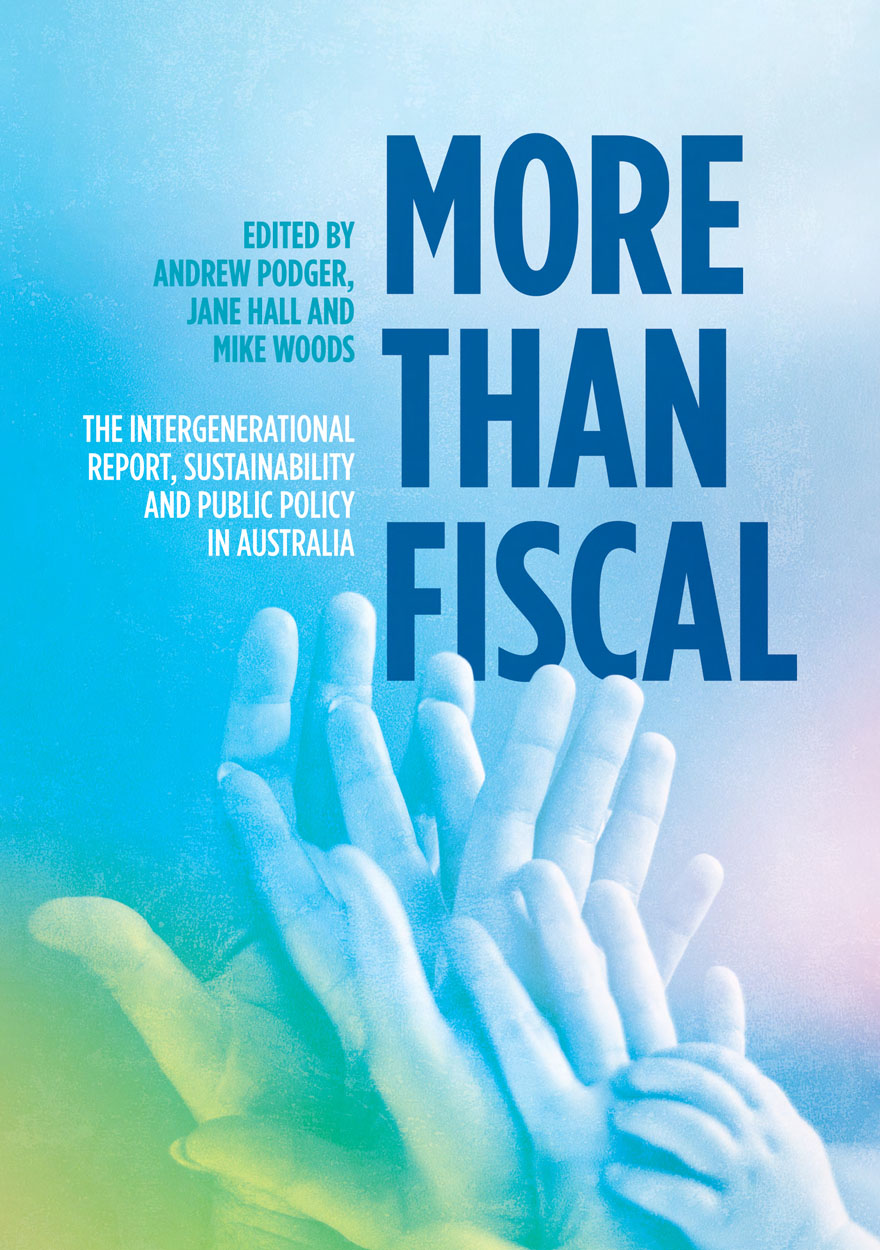
More Than Fiscal »
The Intergenerational Report, Sustainability and Public Policy in Australia
Publication date: May 2023
Every five years, the Australian treasurer is required to publish an intergenerational report (IGR), which examines the long-term sustainability of current government policies and seeks to determine how demographic, technological and other structural trends might affect the economy and the budget in coming decades. Despite these lofty objectives, the five IGRs produced from 2002 have received only muted applause. Critics say that they are too mechanical, too narrow and too subject to the views of the government of the day and that they don’t provide the intended wake-up call for public understanding of looming economic, social and environmental issues.
This analysis of the most recent IGR (2021) is based on a workshop hosted by the Academy of the Social Sciences in Australia. While finding that the 2021 IGR is an improvement on the previous report (2015), the authors identify several fiscal and broader policy issues that deserve greater attention, including Australia’s structural deficit, rising inequality and the impacts of climate change. They argue that the report fails to discuss the policies required to support greater resilience against future shocks, including the case for earlier budget repair. They propose that future IGRs be prepared with greater independence, cover all levels of government, have more transparent analysis and draw upon a wider ‘wellbeing’ approach to long-term sustainability.
This book aims to attract close attention from public officials and politicians and generate constructive debate in the community.



